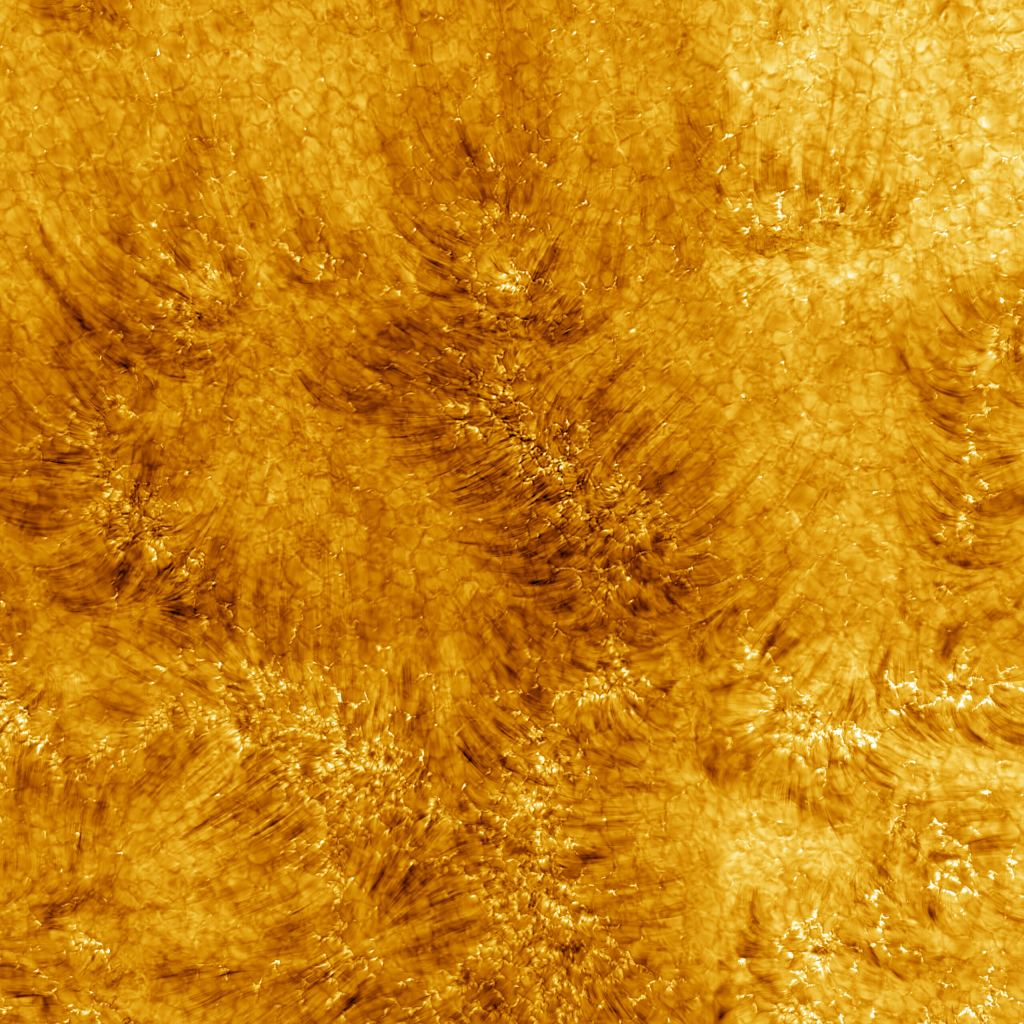New images of the Sun’s chromosphere – the lower region of the solar atmosphere — have been released, and to say they are ‘stellar’ is an understatement. Simply, they are stunning. The high-resolution images were taken with the now-fully-operational Daniel K.
Inouye Solar Telescope, located on the summit of Haleakala, Maui, in Hawai‘i. Scientists say the new observatory — with its large 4-meter (13-ft) primary mirror — will enable a new era of solar science, and provide a leap forward in understanding the Sun and its impacts on our planet. The image above shows a region 82,500 kilometers across at a resolution of 18 km, showing a region on the Sun where temperatures can reach 7,200 degrees Celsius (13,000 degrees Fahrenheit).
The images were taken on June 3 of this year and released publicly this week. The National Science Foundation (NSF) says the Inouye Solar Telescope is nearing the completion of the first year of its Operations Commissioning Phase (OCP), and is “delivering on its promise to reveal the Sun in ways never seen before. ” The Inouye telescope is currently the largest solar telescope in the world.
While previous images have been taken with the new telescope, full operations were delayed because of the COVID-19 pandemic. Previous images included an incredible view of a sunspot and the highest resolution picture of the Sun ever taken, but we can expect to see more and higher resolution images in the coming years. Scientists say the telescope’s advanced optics and primary mirror will give scientists the best view of the Sun from Earth throughout the next solar cycle.
The Sun’s chromosphere, as seen by the Daniel K. Inouye Solar Telescope on June 3rd, 2022. The image shows a region 82,500 kilometers across at a resolution of 18 km with the Earth overlaid for scale.
Credit: NSO/AURA/NSF. With the telescope now fully operational, the NSF held a celebration on August 31, 2022, with science officials, congressional dignitaries, and members of both the scientific and Native Hawaiian communities, as the telescope sits on a mountain that has spiritual and cultural significance to the Native Hawaiian people. “With the world’s largest solar telescope now in science operations, we are grateful for all who make this remarkable facility possible,” said Matt Mountain, President of the Association of Universities for Research in Astronomy (AURA) “In particular we thank the people of Hawai‘i for the privilege of operating from this remarkable site, to the National Science Foundation and the US Congress for their consistent support, and to our Inouye Solar Telescope Team, many of whom have tirelessly devoted over a decade to this transformational project.
A new era of Solar Physics is beginning!” One of the primary goals of the Inouye Solar Telescope is to gain a better understanding of the solar dynamics. This in turn will also help scientists predict and prepare for solar storms, called coronal mass ejections (CME). CMEs send hot plasma from the Sun’s corona, and if Earth is in the path, this can damage satellites in Earth orbit and interfere with power grids on the planet.
Scientists hope to be able to improve their predictions of major weather events. Presently, space agencies are able to anticipate events about 48 minutes ahead of time. But with the new telescope, they are hoping to make predictions 48 hours in advance.
“NSF’s Inouye Solar Telescope is the world’s most powerful solar telescope that will forever change the way we explore and understand our sun,” said NSF Director, Sethuraman Panchanathan. “Its insights will transform how our nation, and the planet, predict and prepare for events like solar storms. ” The telescope was named for the late Hawaiian Senator Daniel K.
Inouye. Haleakal? means “House of the Sun. ” Further reading: NSF press release The post Insanely High-Resolution Images of the Sun Show its Chromosphere in Vivid Detail appeared first on Universe Today.
.

